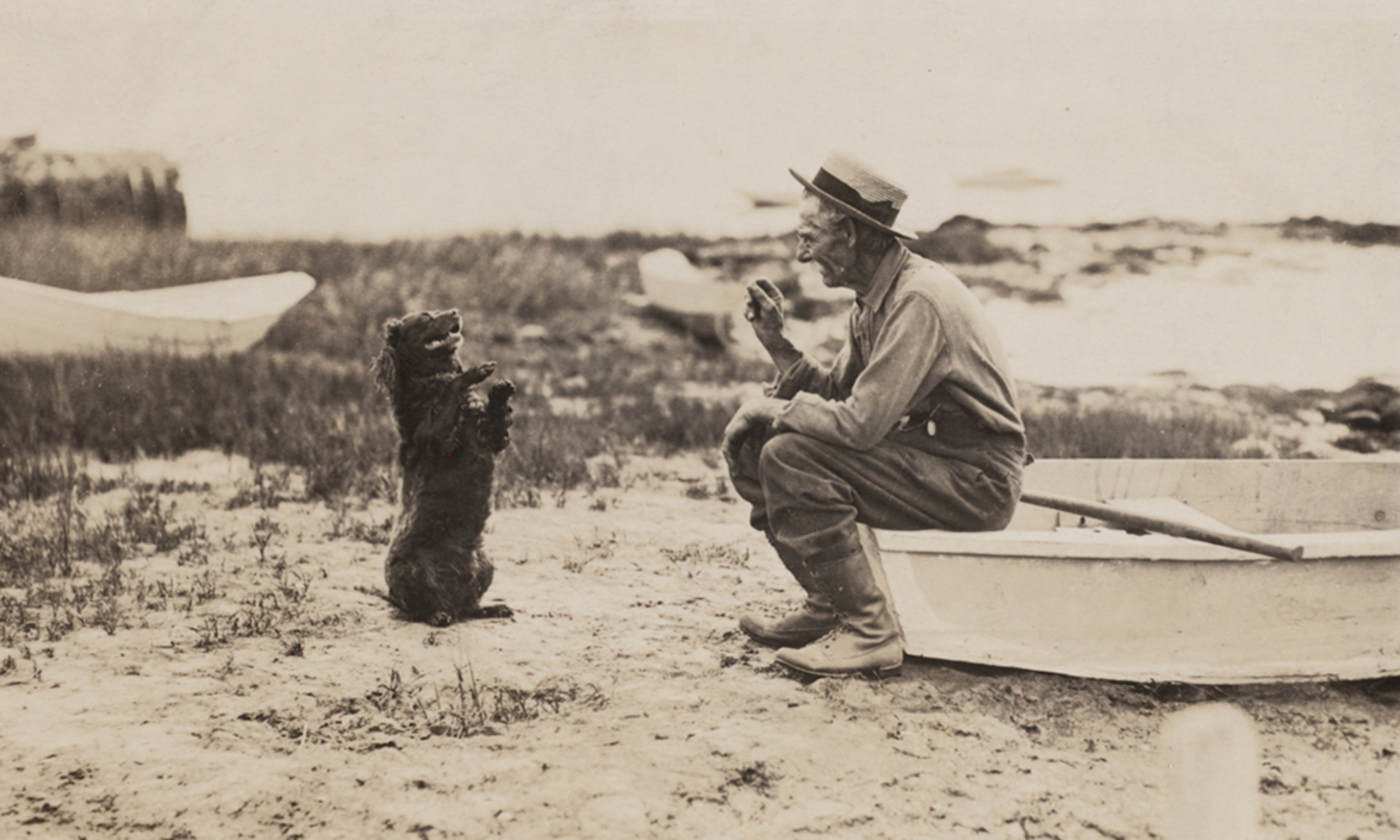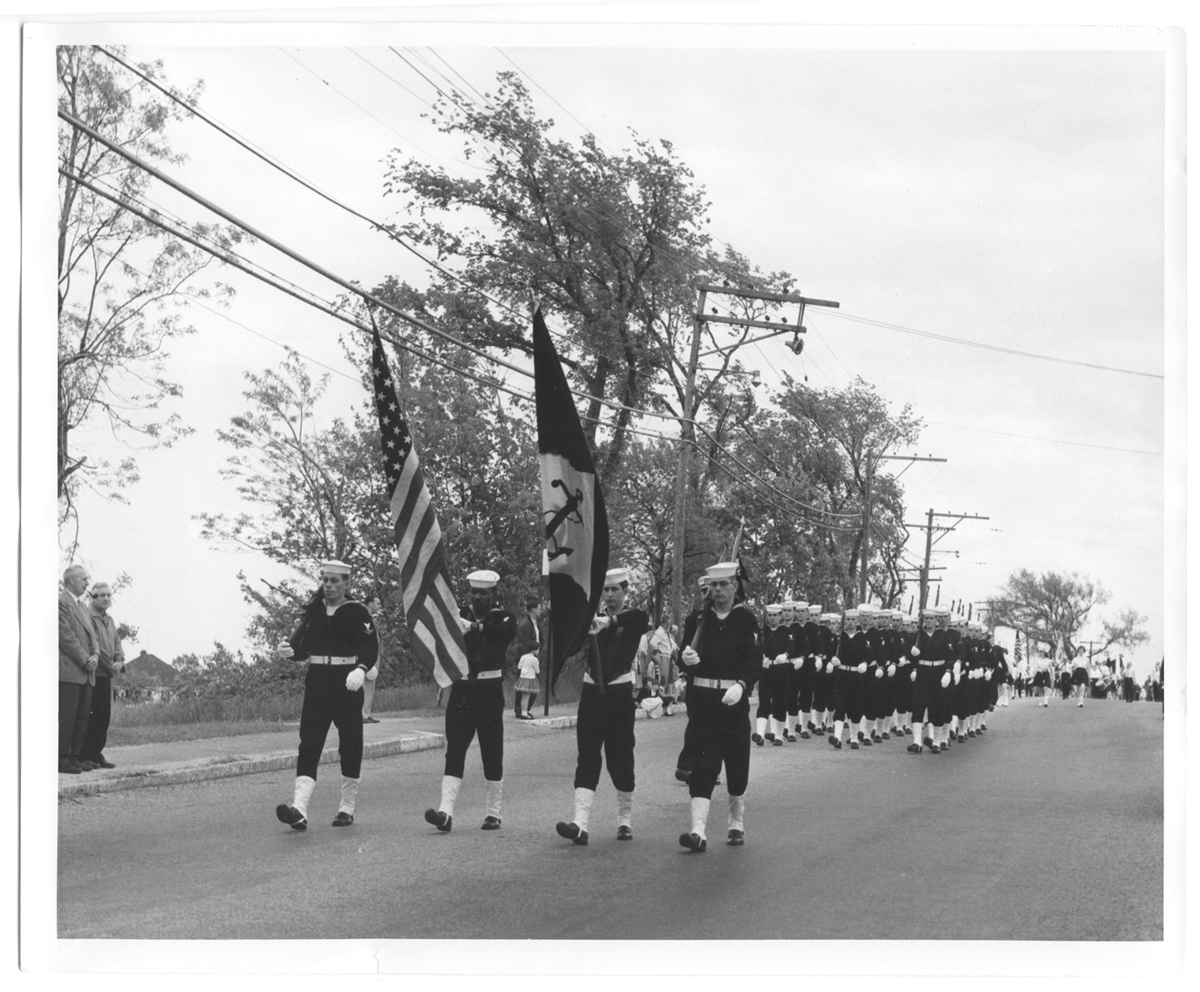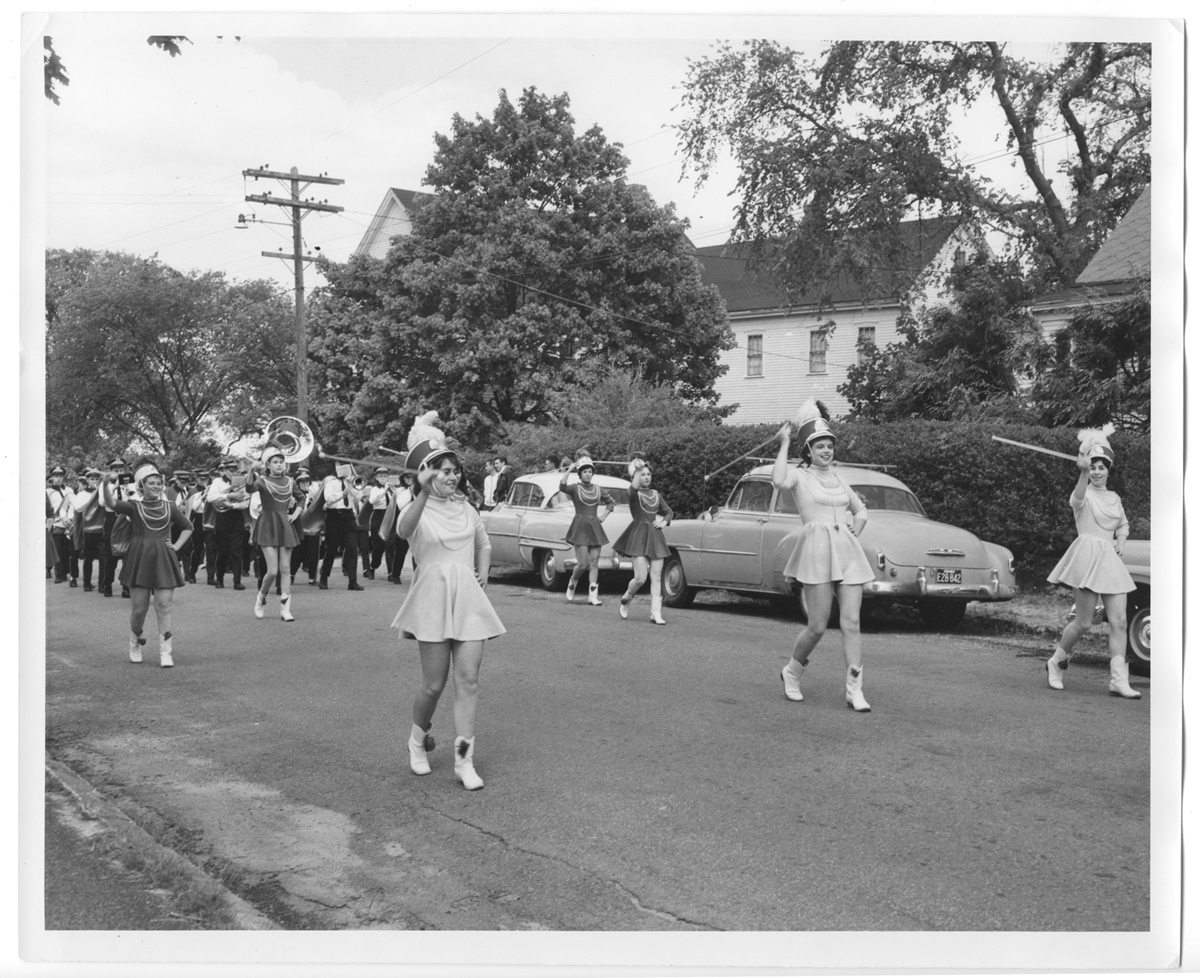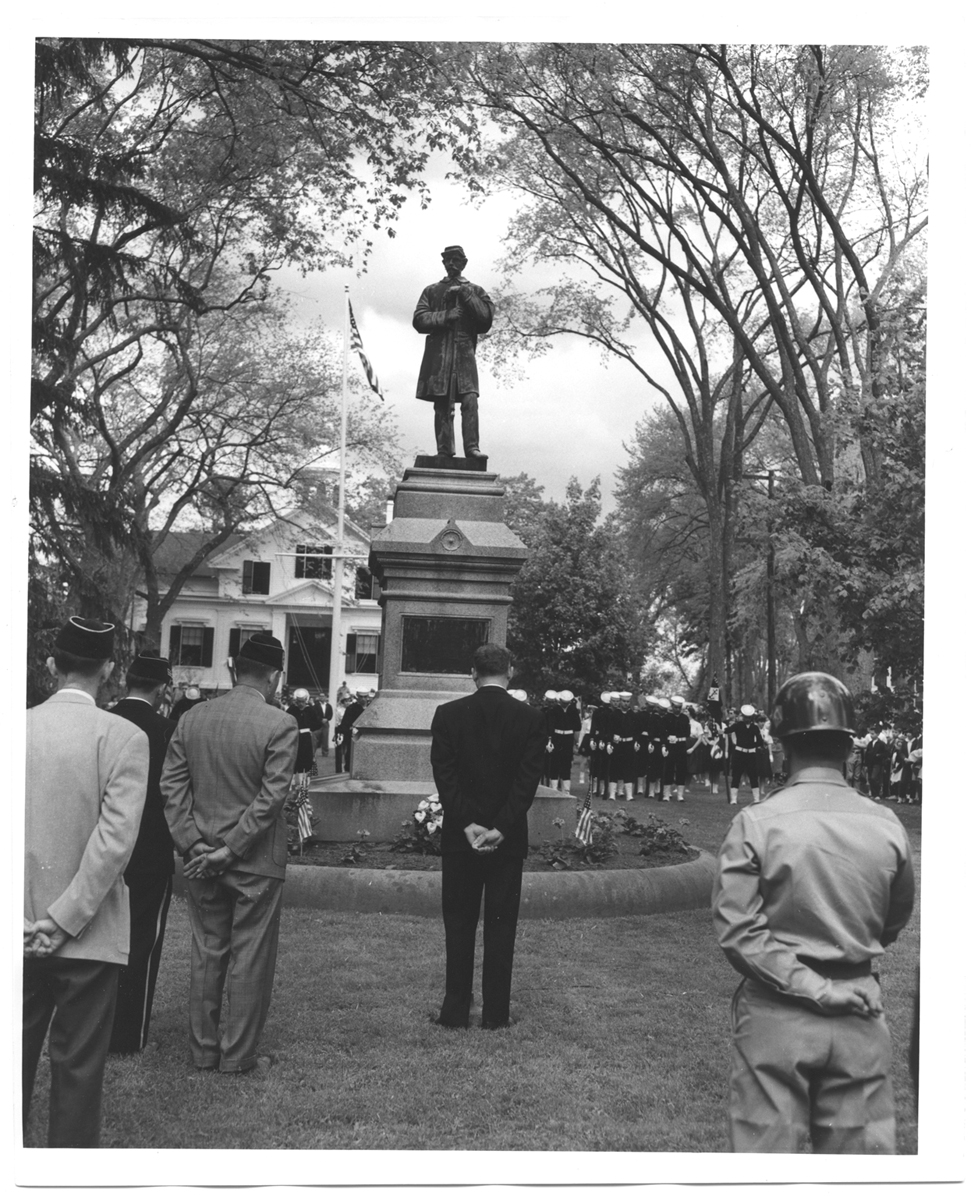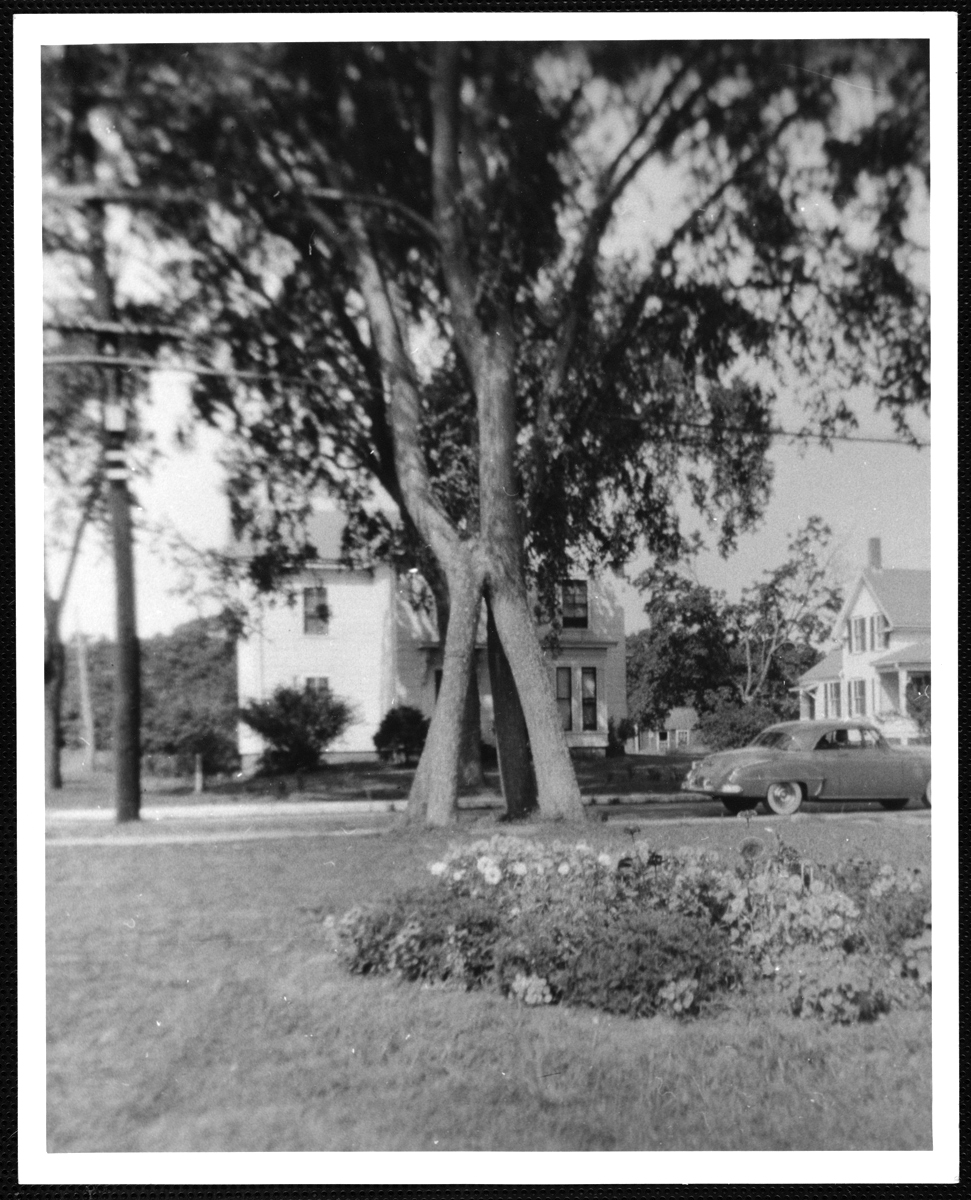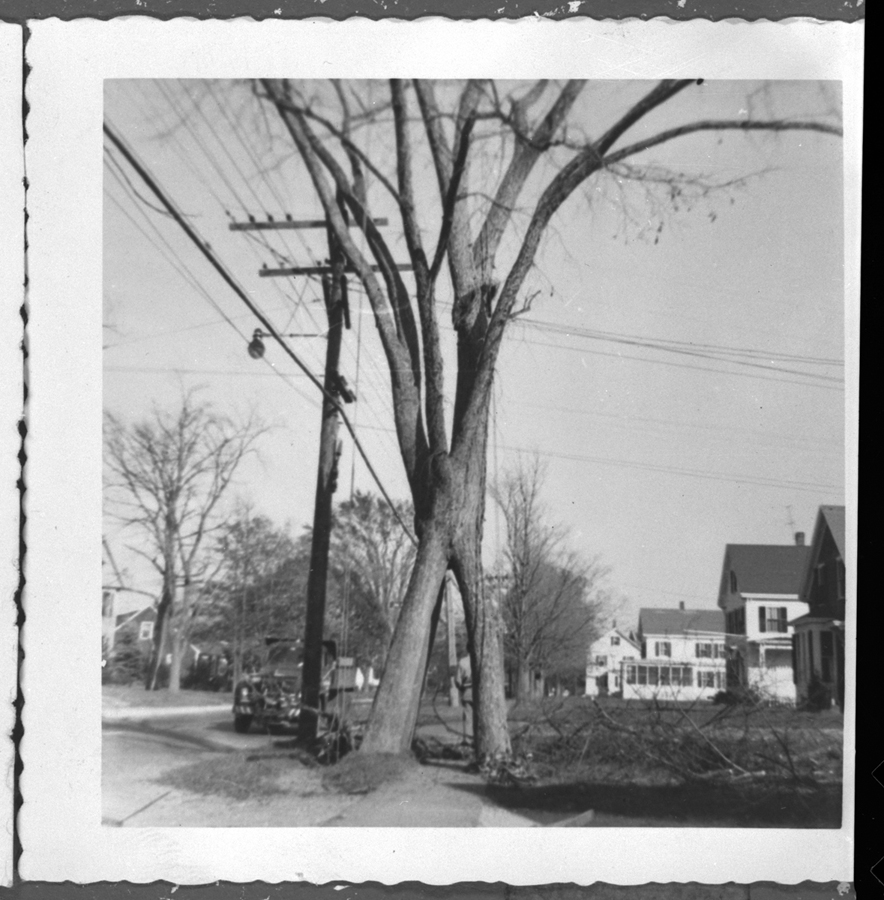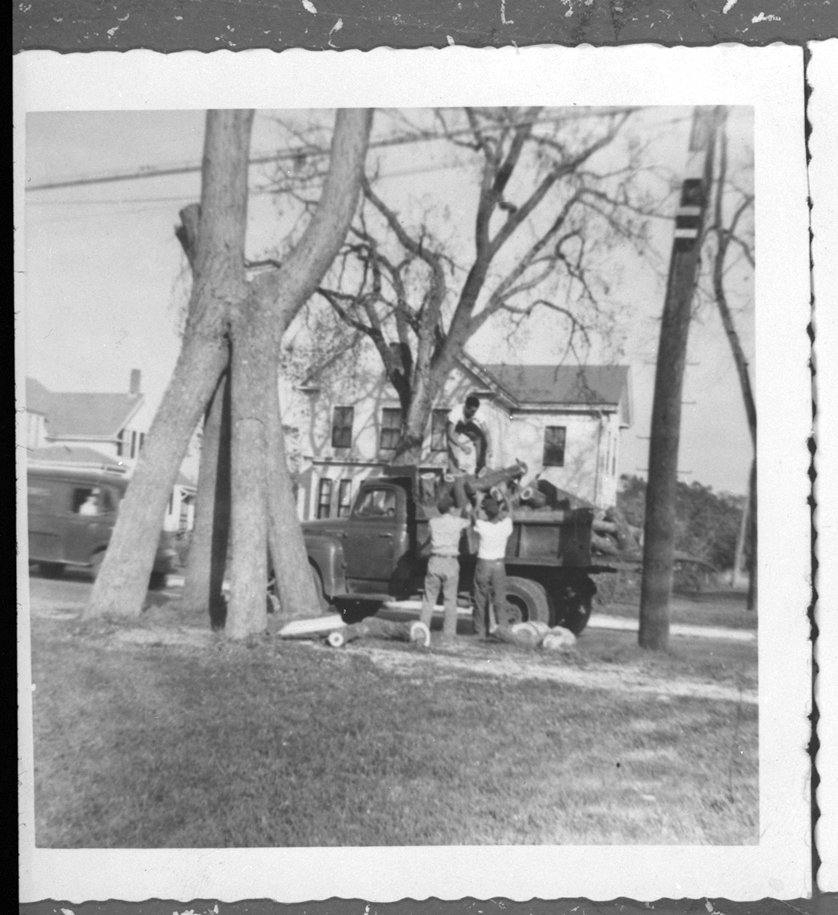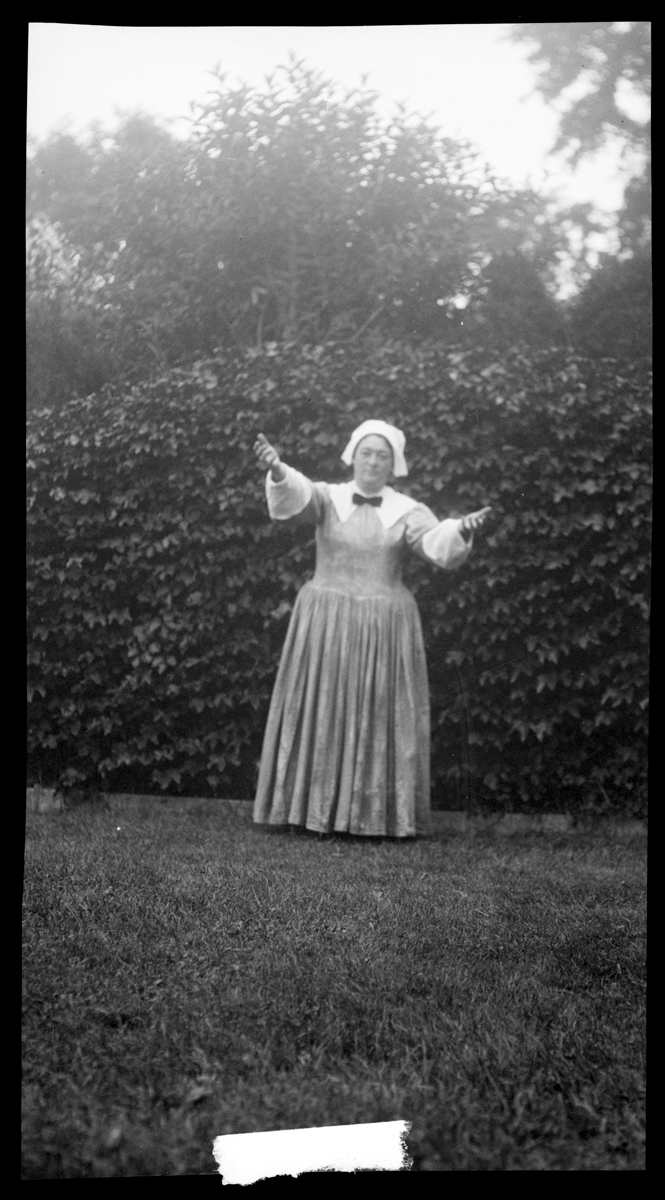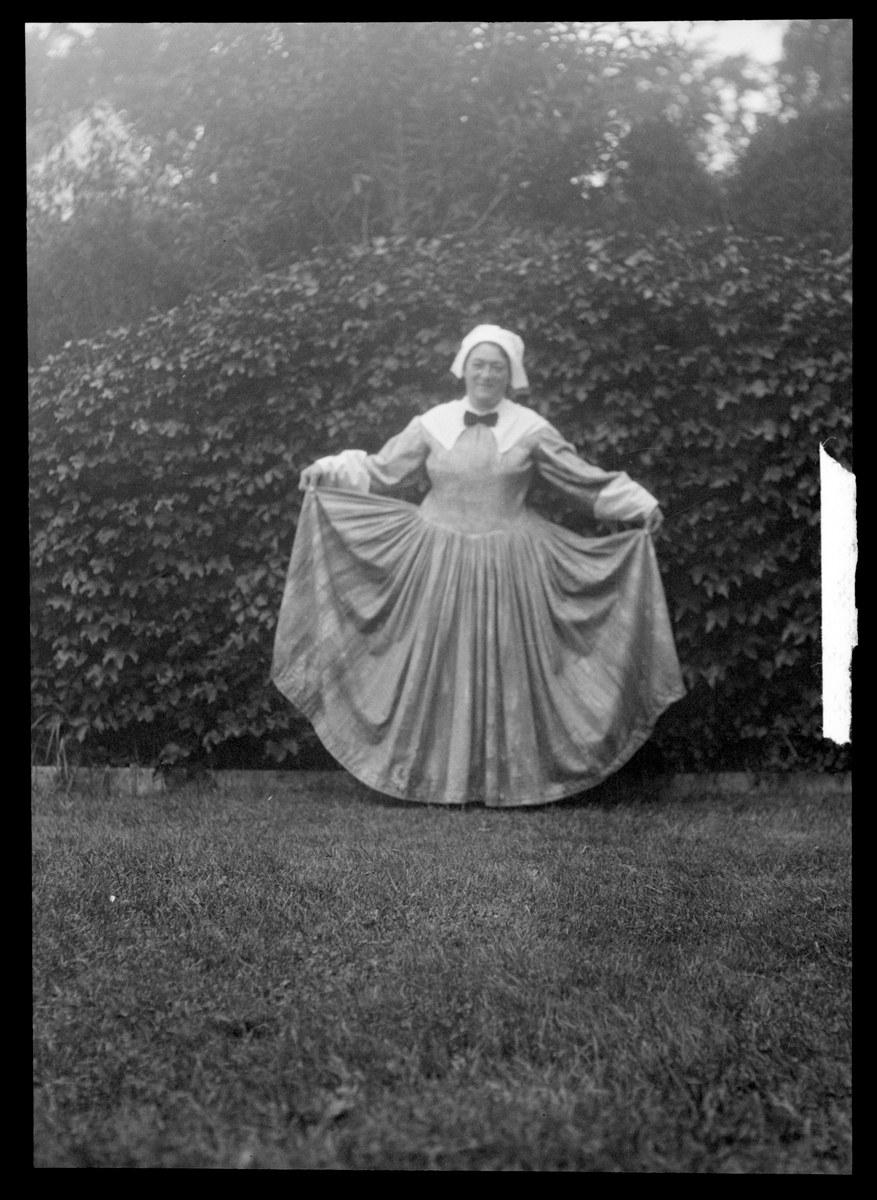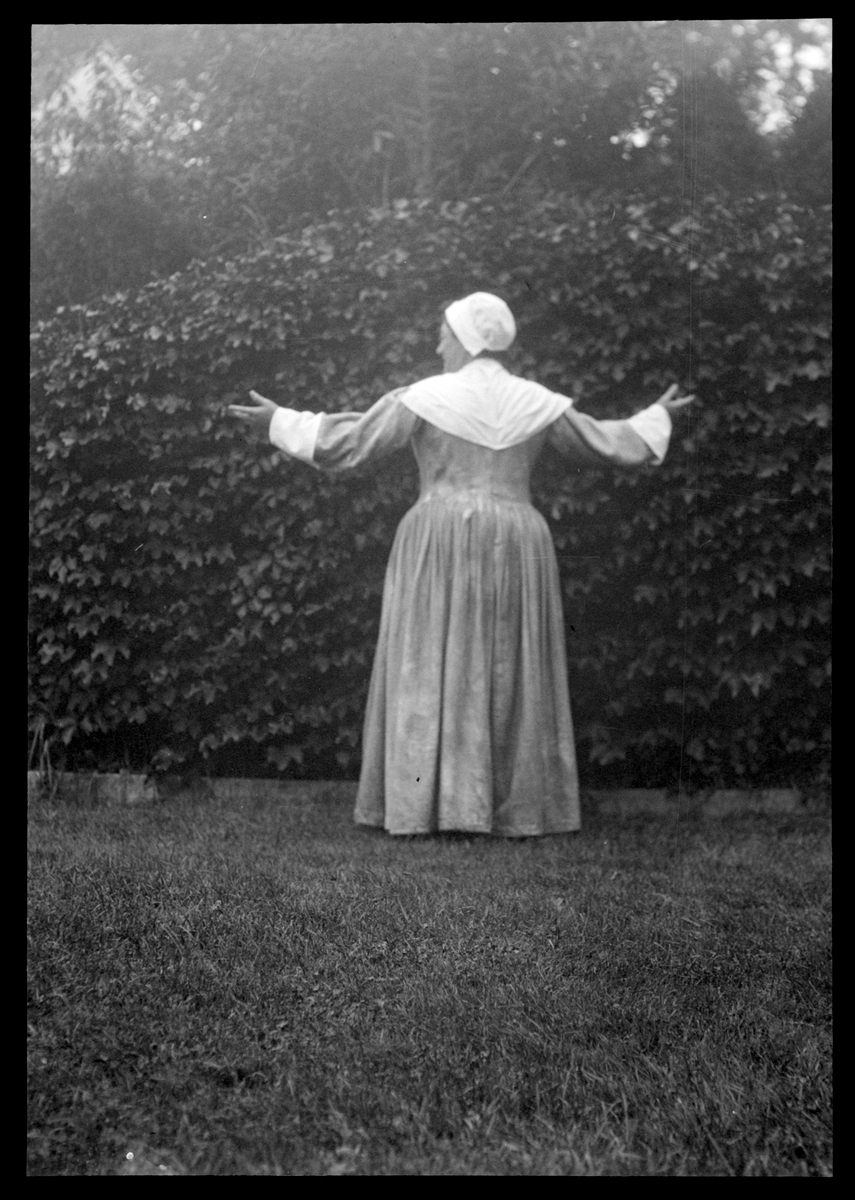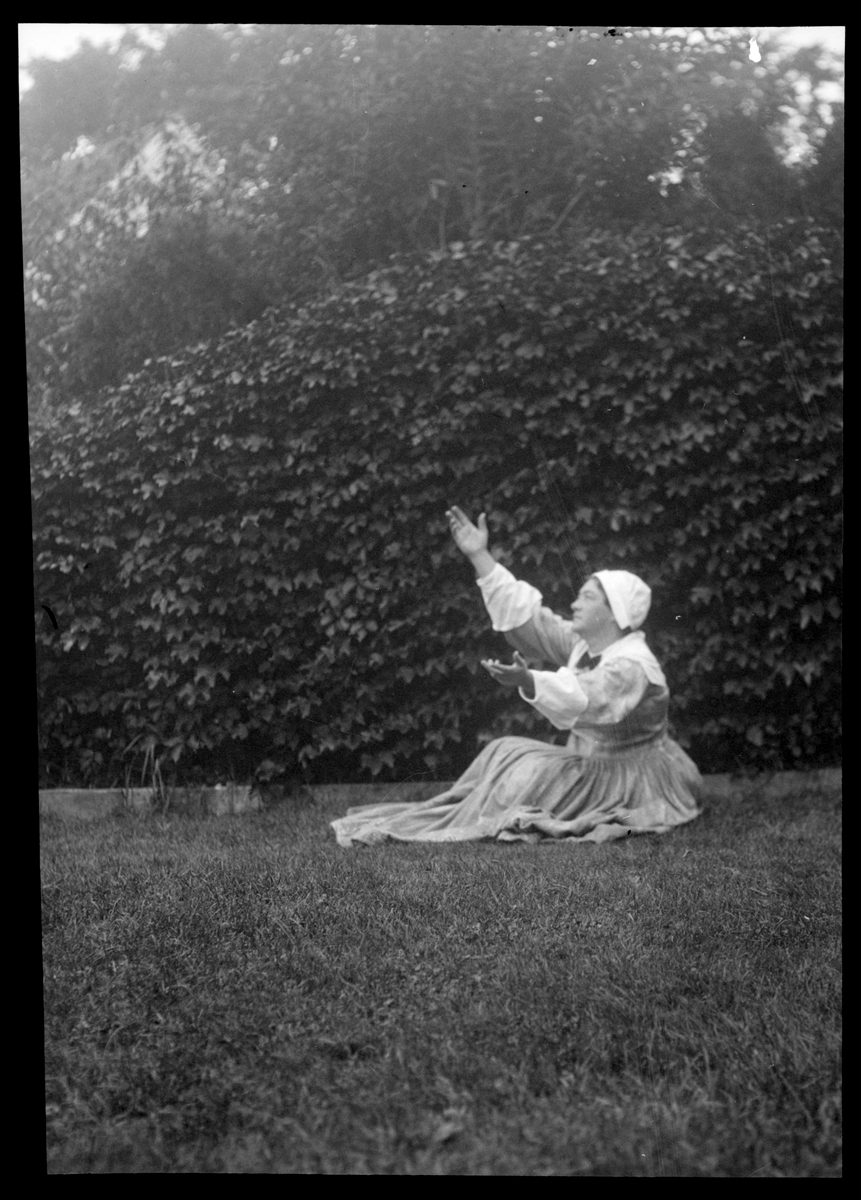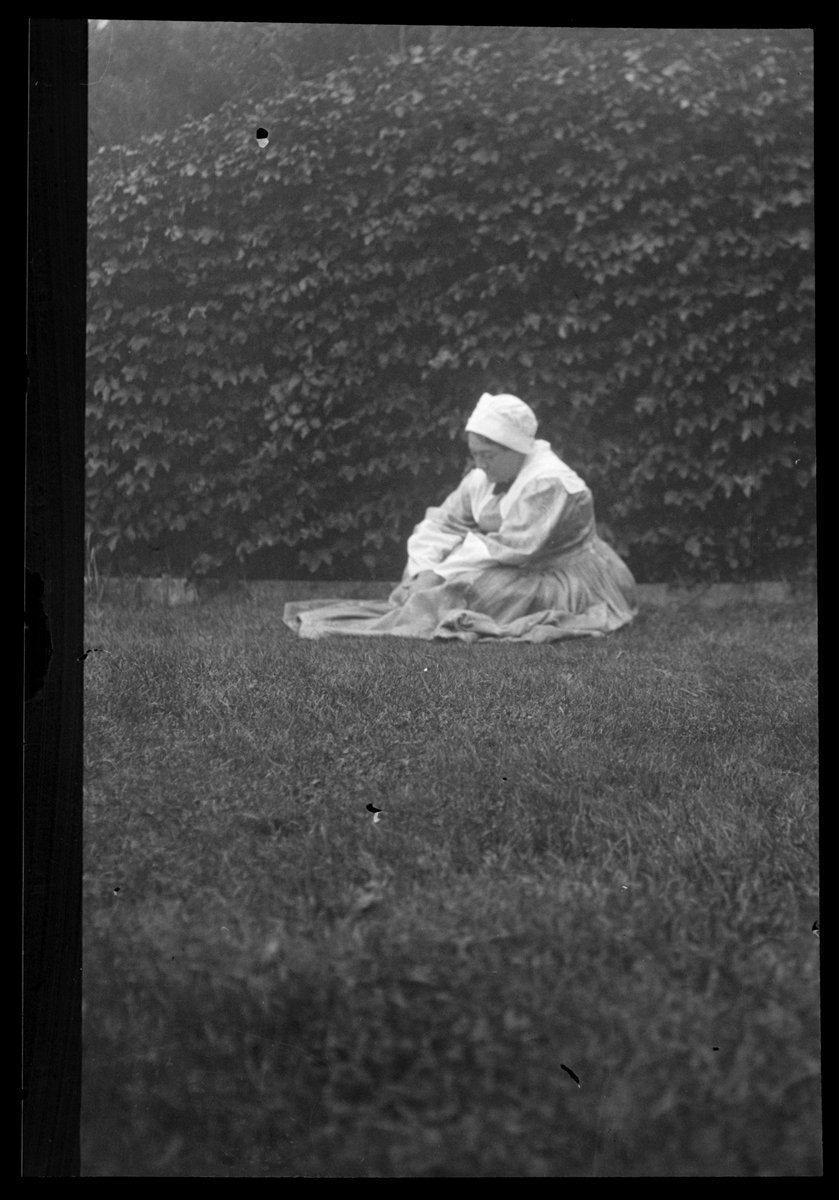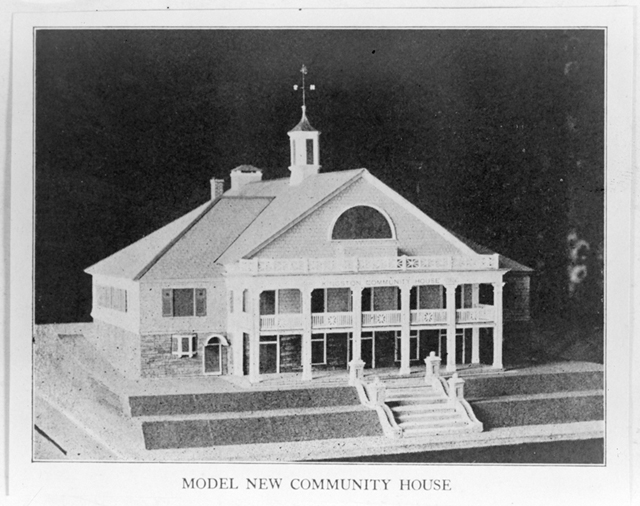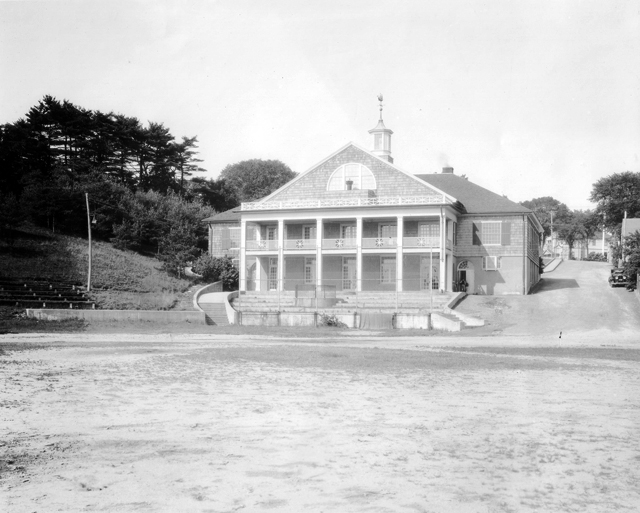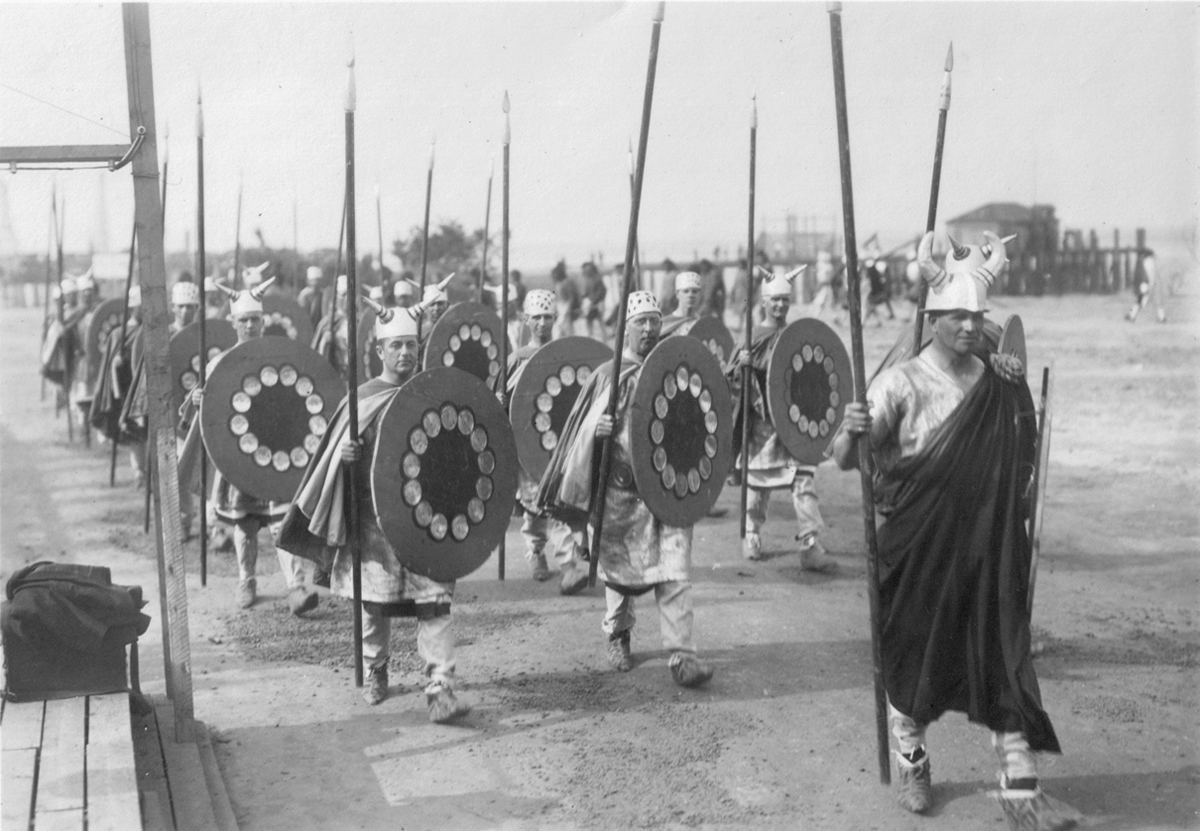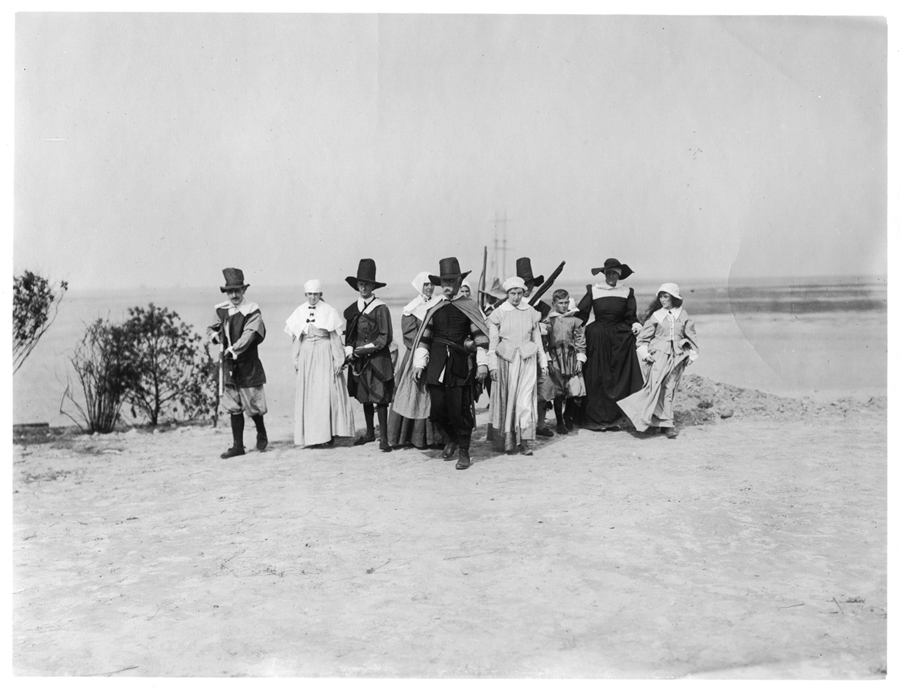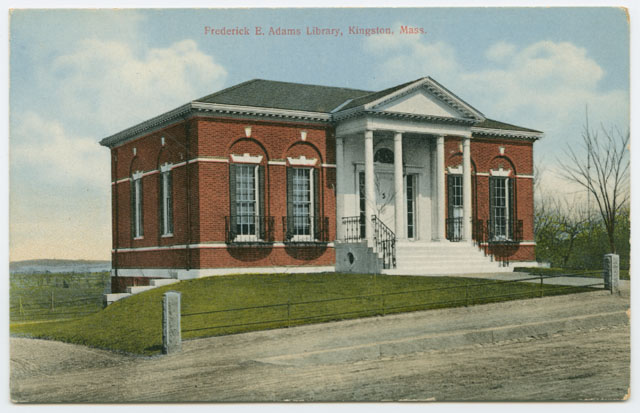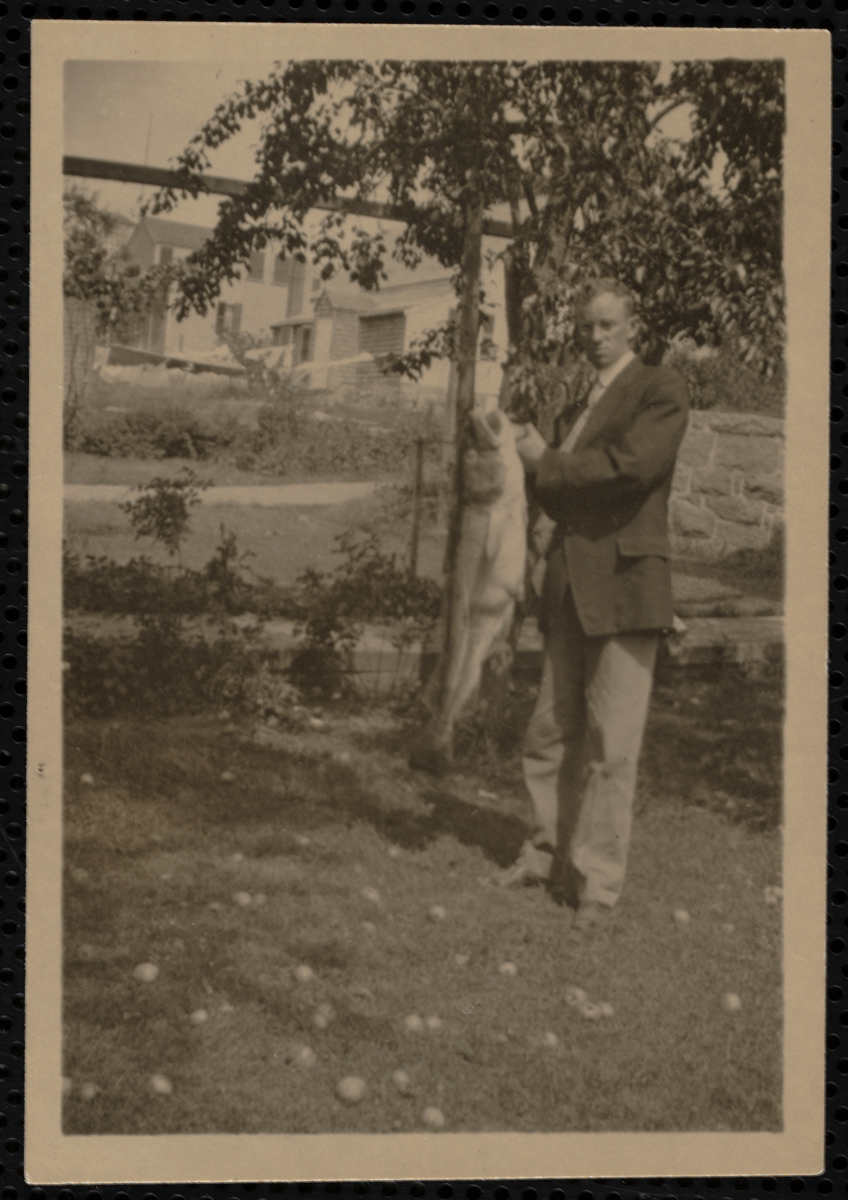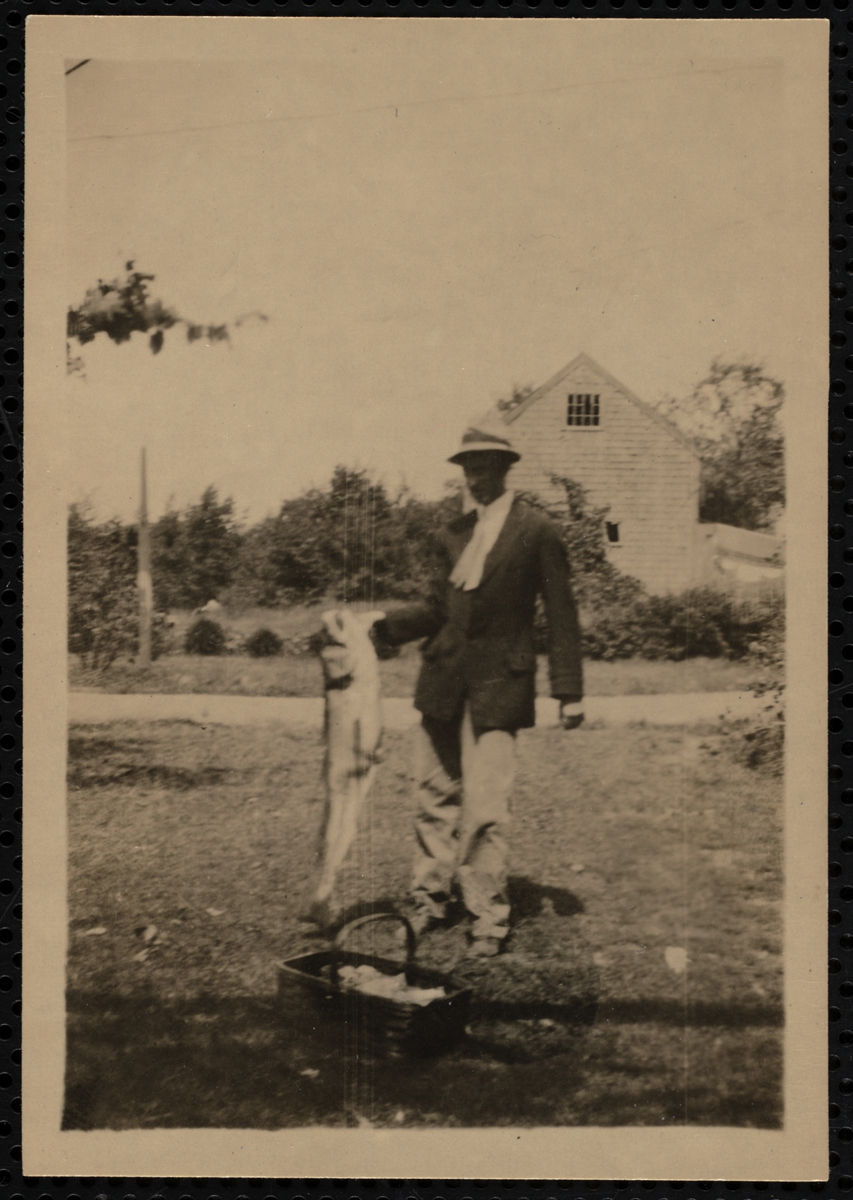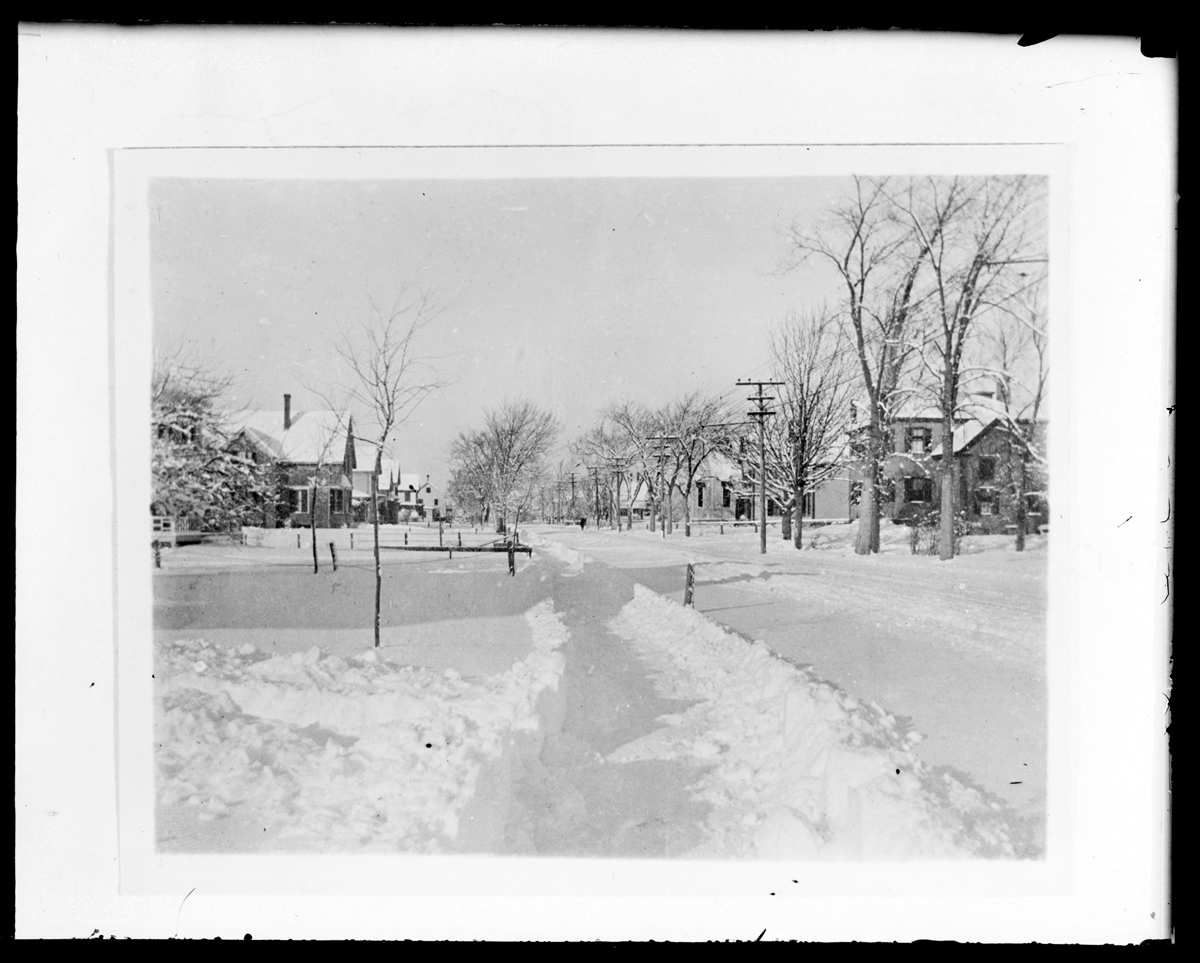The Liberty Bell came through Kingston!
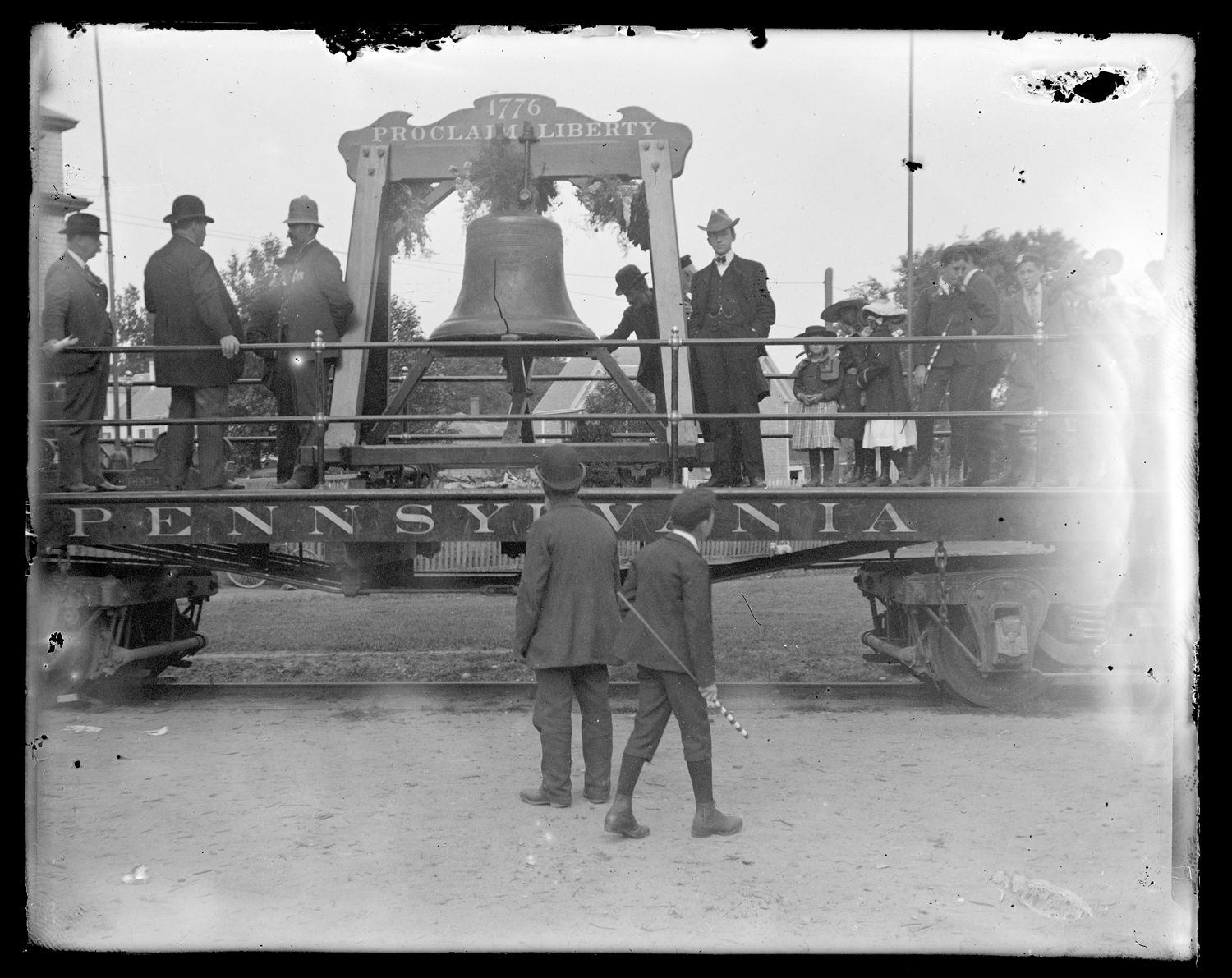
Yes, THAT Liberty Bell! And we have five glass plate negatives to help tell the tale.
Between 1885 and 1915, the Bell gallivanted around the country — down to New Orleans, across to Chicago, all the way to California — on a special flatbed railcar. In 1903, one of those trips brought the famed Bell to Boston for a commemoration of the Battle of Bunker Hill, then south to Plymouth on June 18th.
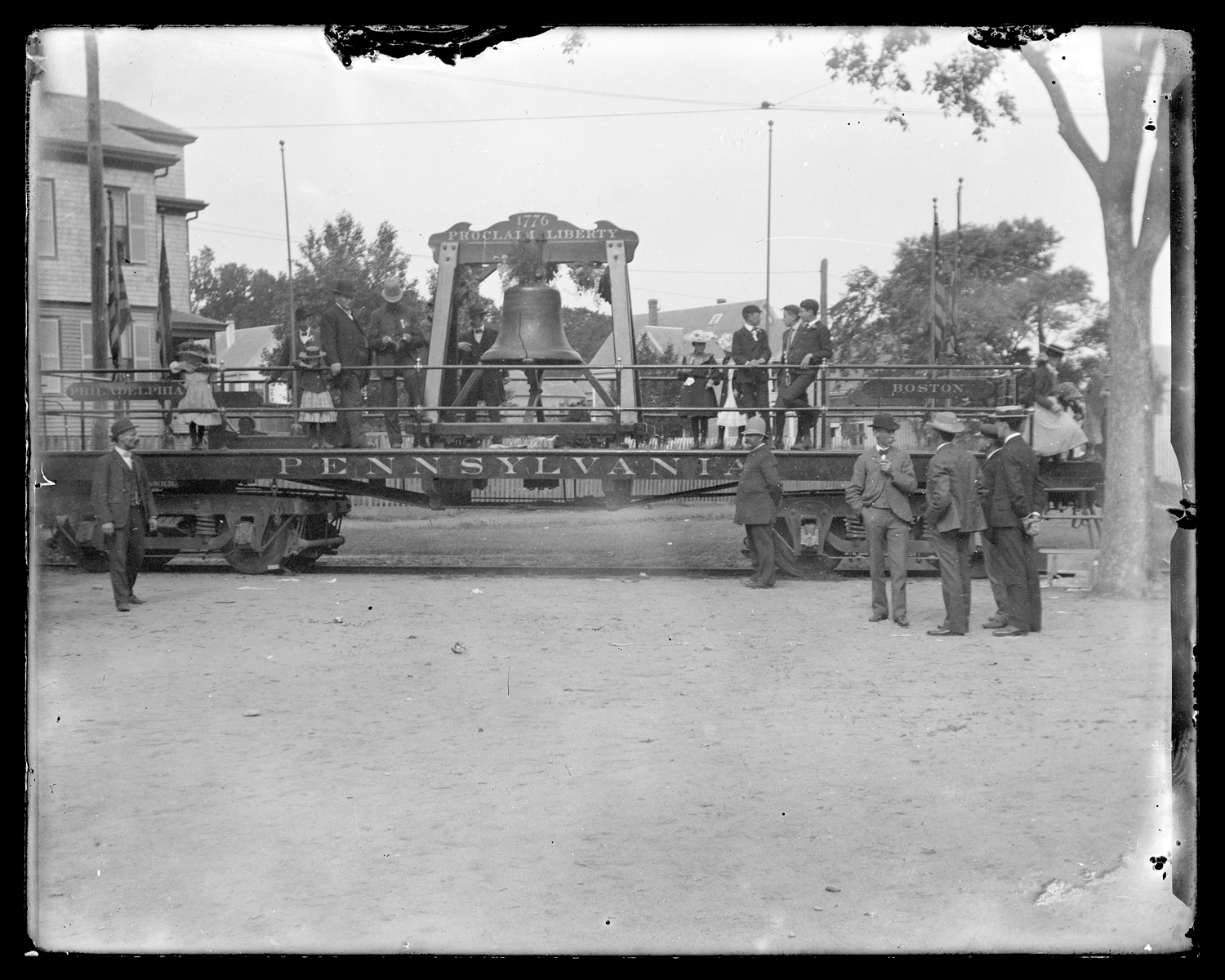
The Boston Globe proclaimed the event “one grand ovation.” After an estimated 50,000 people saw the Bell on Boston Common, hundreds more lined the tracks and thronged the stations as the train carried this most American symbol from South Station to meet its less-travelled cousin, Plymouth Rock.
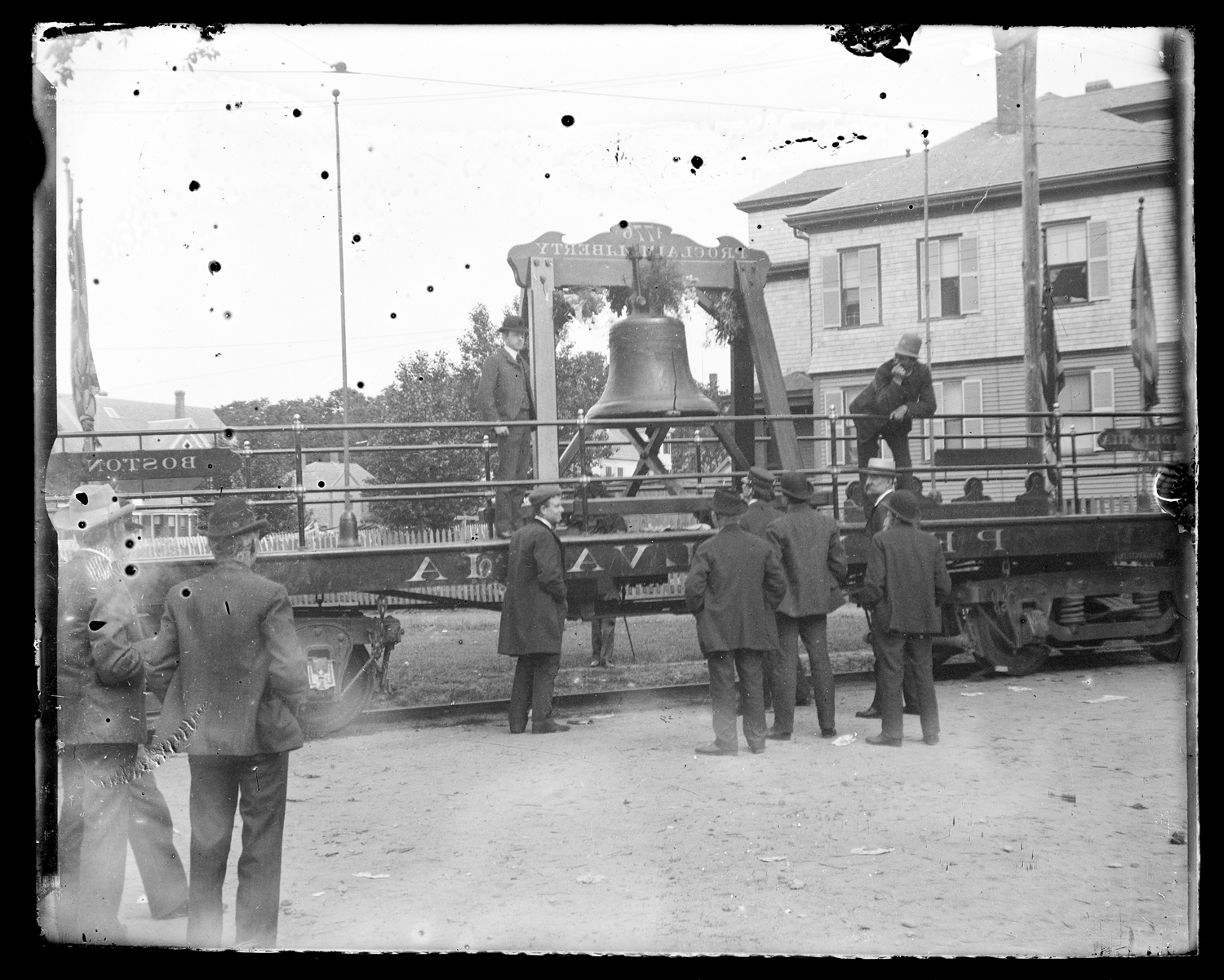
On its journey, the Bell was guarded by patrolmen from Philadelphia and Boston — “their work was not arduous” said the Globe — watched over by GAR veterans and active military escorts, and accompanied by politicos and tycoons who “scattered flowers and other Liberty Bell souvenirs” to the singing, flag-waving crowds at each station stop.
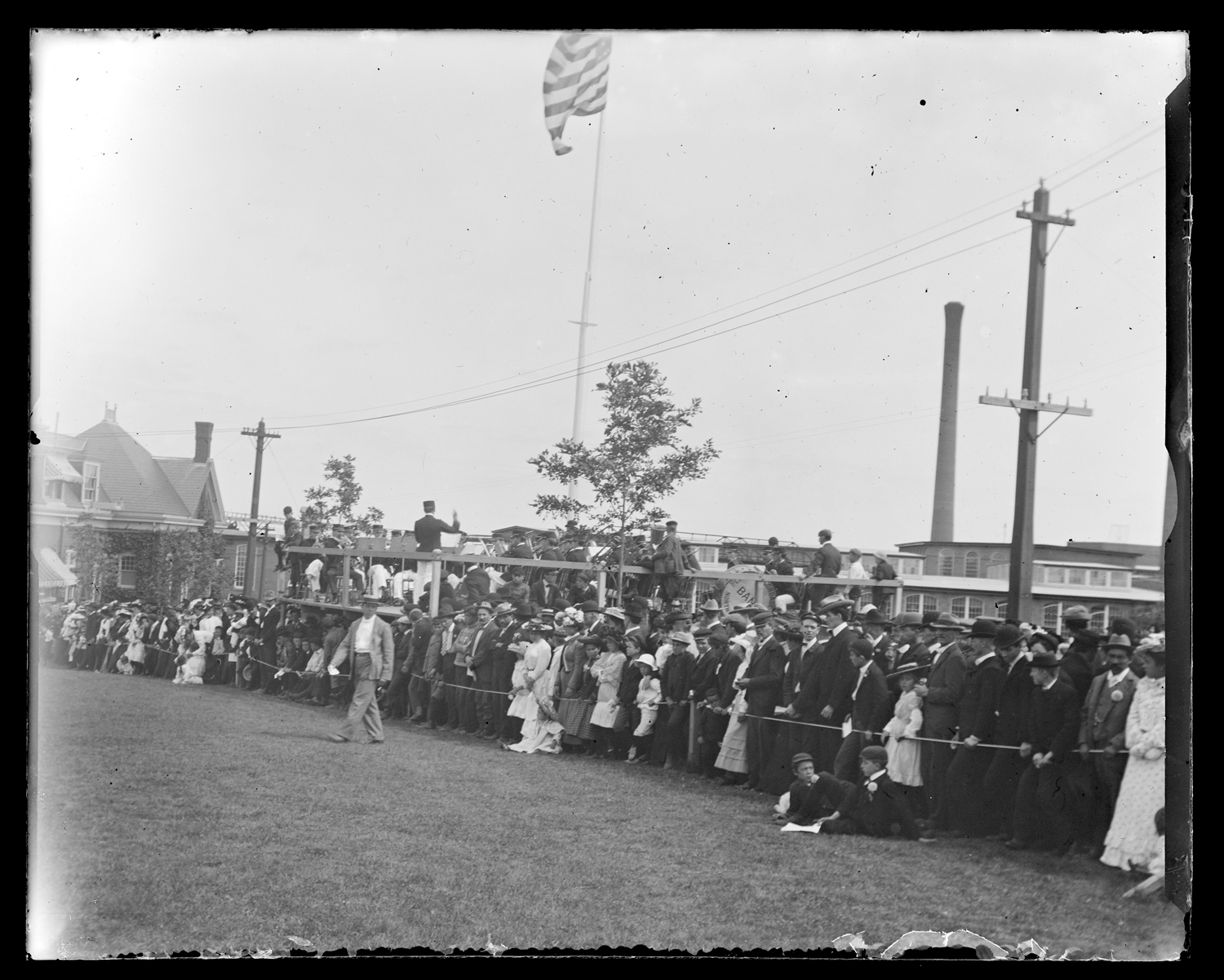
The celebration in Plymouth included a sumptuous banquet at the Hotel Pilgrim, patriotic tunes, and speeches galore. The sizable Philadelphia delegation even got to stand on Plymouth Rock!
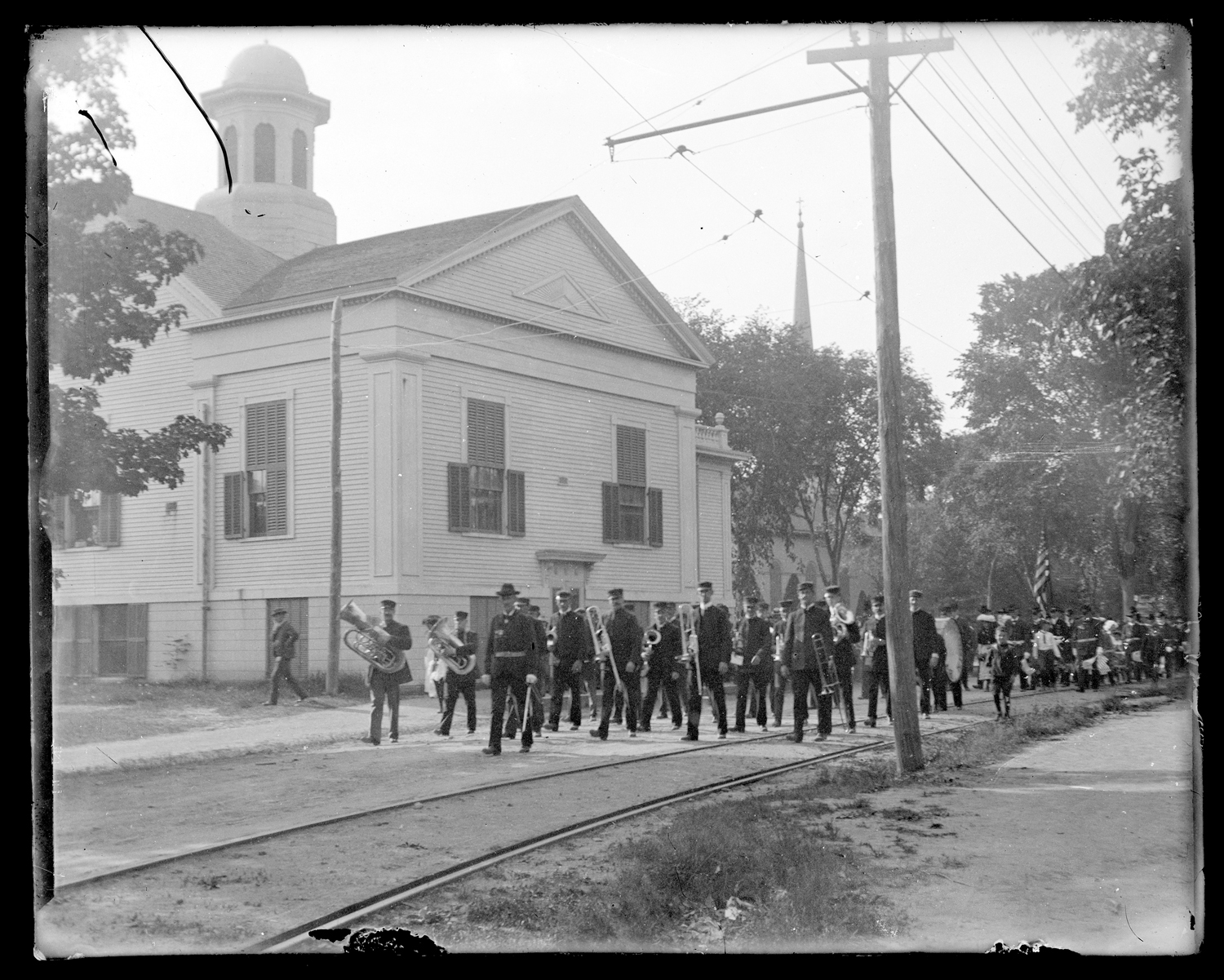
Though Kingston was not specifically mentioned in the Globe, we know the Bell came through on the way to Plymouth and back. This last image gives some idea of how Kingston celebrated. [If something about this image seems strange to you, you’re right! It’s reproduced in reverse, as is the third photo above.]
The Liberty Bell’s last train trip was to San Francisco in 1915. Officials determined that in 30 years of crossing the country, the Bell had lost 1% of itself along the way and this American icon has remained home in Philadelphia for the last 99 years.
Sources: Glass plate negatives from the Margaret Warnsman Collection MC30 (scans federally funded with LSTA funds through the Massachusetts Board of Library Commissioners and digitized at the Boston Public Library in conjunction with the Digital Commonwealth); “Seen by 50,000 on Common,” Boston Globe, June 19, 1903; Liberty Bell Timeline; National Park Service “The Liberty Bell: From Obscurity to Icon”
For more, visit the Kingston Public Library, and the Local History Room, and the full blog at piqueoftheweek.wordpress.com.
